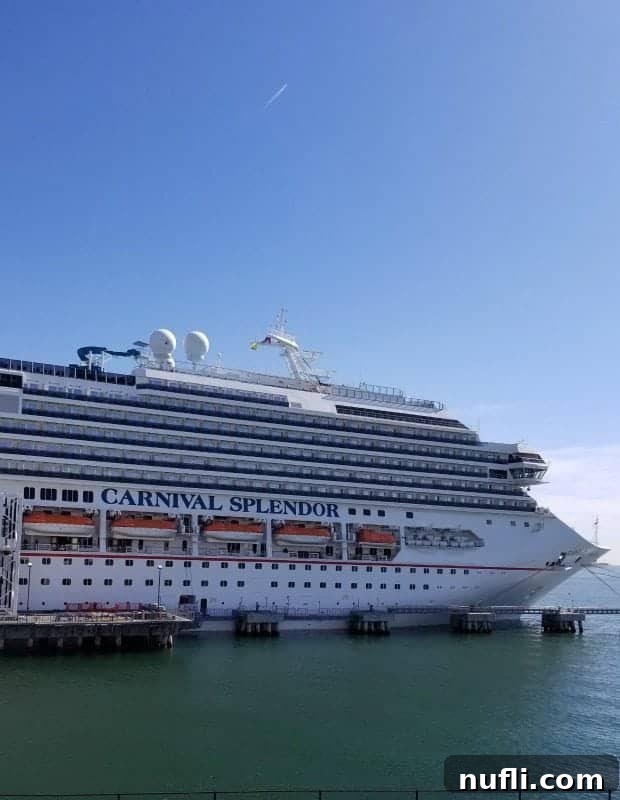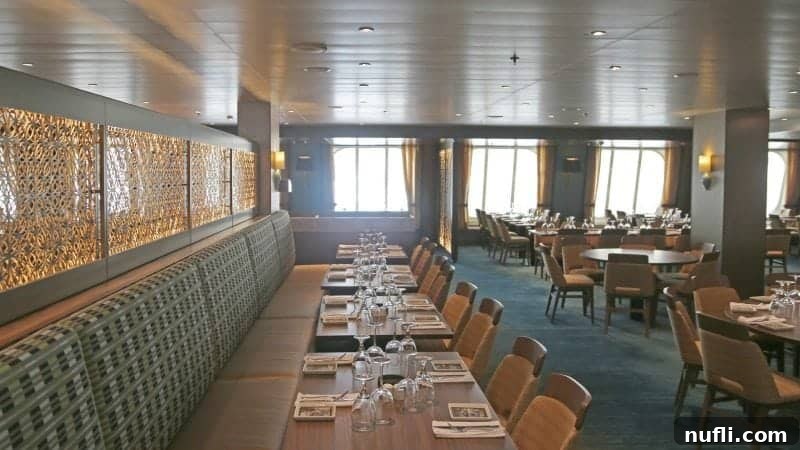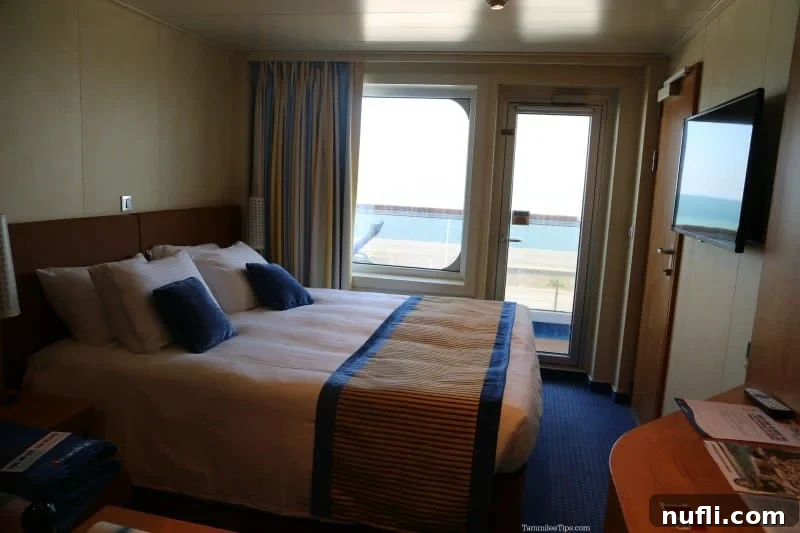Embarking on your very first cruise is an adventure filled with excitement, anticipation, and, quite naturally, a whole host of questions. Having sailed on over twenty cruises around the globe ourselves, we intimately recall the myriad of queries we had before our inaugural voyage—a two-week Mediterranean honeymoon over eight years ago. It’s an incredibly rewarding way to explore the world, and our goal today is to demystify the cruising experience by answering the most common first-time cruise questions. We aim to equip you with all the essential information needed to ensure your maiden voyage is nothing short of spectacular. If we happen to miss anything or if you have specific questions, please don’t hesitate to reach out!

First-Time Cruise Tips: Essential Questions Answered for Your Dream Vacation
The prospect of a cruise, whether it’s a tropical escape, a cultural immersion, or an Alaskan wilderness adventure, is truly exhilarating. Yet, as with any major travel plan, it’s completely normal to have a flurry of questions, worries, or even mild fears leading up to your departure. Rest assured, you’re not alone in these feelings. Every seasoned cruiser was once a first-timer, navigating the same unknowns. We’re here to guide you through the process, making your cruise preparation seamless and enjoyable.

Navigating the Embarkation Process: Your First Steps Onboard
Do I just walk onto the cruise ship, or is there a process?
While the ultimate goal is indeed to walk onto your magnificent cruise ship, there’s a well-organized process designed for your safety and convenience. Upon arrival at the port terminal, typically within your pre-selected embarkation window, you’ll first pass through a security checkpoint, similar to airport security. Here, your luggage will be screened, and you’ll present your identification. Next, you’ll proceed to the check-in counter where your passport will be scanned, and a photo will be taken for your personalized cruise card. This card becomes your essential identification, room key, and onboard payment method throughout your journey. You might also have the option for a professional embarkation photo, a fun souvenir to commemorate the start of your vacation. Once these steps are completed, you’re officially cleared to board, stepping directly onto the ship to begin your amazing vacation.
Will my passport be stamped during my cruise?
Whether your passport receives a stamp during your cruise largely depends on your itinerary and the countries you visit. For many popular cruise destinations, particularly in the Caribbean and Mexico, it’s quite common for passports not to be stamped. This is often because cruise lines submit group manifests, and passengers are granted temporary shore leave without individual passport processing. However, if collecting passport stamps is a travel tradition for you, some islands may have a customs office where you can request a stamp. Our passports, for example, were notably stamped when we visited St. Petersburg, Russia, during a memorable Baltic cruise, as this requires a specific visa process and individual entry/exit documentation. For European cruises, especially those visiting multiple non-Schengen countries, you may also receive stamps.
Do I have to do a shore excursion at every port?
Absolutely not! Beyond attending the mandatory muster drill at the beginning of your cruise (a brief safety briefing), every other activity and decision on your cruise is entirely your choice. Shore excursions are wonderful opportunities to explore new destinations, immerse yourself in local culture, or embark on adventurous activities. However, you are under no obligation to participate. Many cruisers enjoy exploring ports independently, wandering through local towns, relaxing on a nearby beach, or simply finding a charming café. Furthermore, staying on the ship while it’s in port can be a fantastic experience; the ship is often less crowded, allowing you to enjoy the pools, spa, or other amenities in a more tranquil environment. The flexibility is one of the great joys of cruising.
Do I need to carry cash onboard the ship?
For most transactions onboard, cash is largely unnecessary. Modern cruise lines operate a cashless system, where your cabin key card (which also serves as your cruise card) functions as an electronic payment method. All purchases—drinks, specialty dining, spa treatments, gift shop items, and even casino winnings—are charged to your onboard account, which you then settle at the end of your cruise, typically with a credit card or debit card. However, we always recommend bringing a small amount of cash, primarily for tipping. While gratuities are often automatically added to your onboard account (and can usually be adjusted), having cash allows you to offer additional tips to exceptional service staff like your cabin steward, servers, or even the porters who handle your luggage at the port. Small denominations can also be useful for taxi fares or quick purchases in local ports.
Should I exchange currency before I leave for my cruise?
The necessity of exchanging currency before your cruise heavily depends on your itinerary and how you plan to spend your time in port. In many popular Caribbean and Mexican ports, the US Dollar is widely accepted and often preferred, making pre-exchange unnecessary for those specific regions. However, for cruises in destinations like the Mediterranean, Baltic, or Asia, having local currency such as Euros can be beneficial. While many vendors in tourist areas will accept credit cards or US Dollars (often at unfavorable exchange rates), having local currency provides more flexibility and can lead to better deals. We typically find it most convenient to locate an ATM once we arrive in a port town and withdraw local currency there, which often offers a better exchange rate than airport kiosks. For quick conversions on the go, the xe.com app is an excellent tool to understand current exchange rates.
Will I get hungry or gain weight on a cruise?
The fear of constant hunger on a cruise is almost unheard of; if anything, the opposite is true! Cruise ships are renowned for their abundant food options, available almost around the clock, from lavish buffets and elegant main dining rooms to specialty restaurants, casual cafes, and even 24-hour room service. The only time we’ve ever experienced hunger on a cruise was due to severe jet lag, which threw our internal clocks off, causing us to wake up at odd hours when most dining venues were closed. As for gaining weight, it is a possibility given the sheer volume of delicious food available. However, cruises also offer numerous opportunities to stay active. You’ll likely do a fair amount of walking during shore excursions or simply exploring the vast ship. We make a conscious effort to take the stairs whenever possible, which helps us log extra steps and balance out the indulgent meals. Most ships also feature state-of-the-art gyms, fitness classes, and plenty of deck space for walks or jogs.

Do I have to eat with the same people every night?
Not necessarily! Your dining companions primarily depend on the dining option you select when booking your cruise: “Set Dining” or “My Time Dining” (also known as Anytime Dining). With a “Set Dining” time, you are assigned a specific table, typically at either an early or late seating, and you will likely dine with the same group of people and waitstaff each evening. This can be a wonderful way to meet new friends and build rapport throughout your cruise. However, if you prefer more flexibility, “My Time Dining” allows you to choose when and with whom you eat each night within a designated window. We tend to prefer “My Time Dining” as it eliminates the stress of adhering to a rigid schedule, especially if we have a late return from a shore excursion or decide to make reservations at a specialty restaurant. This way, you never have to worry about your tablemates waiting for you to join them for dinner.
How formal is the formal night on a cruise?
The formality of “formal night” (or “dress-up night” as some lines now call it) can vary significantly depending on the cruise line, the specific ship, your destination, and even the demographic of your fellow passengers. We’ve witnessed everything from full tuxedos and elegant gowns on luxury lines to Hawaiian shirts and smart casual slacks on more relaxed, contemporary cruises. Generally, Caribbean cruises tend to lean towards a more relaxed interpretation of formal attire compared to European or transatlantic voyages. A good rule of thumb is ‘smart casual’ as a minimum (dress pants, collared shirts for men; dresses, skirts, or dressy slacks for women). If you want a clear idea of what to expect, a great tip is to search Instagram by your specific cruise ship name, cruise company, or general cruise travel hashtags. This visual research often provides an accurate representation of what passengers typically wear for formal events.

Do I need to book a balcony stateroom for my first cruise?
This is a fantastic question with a nuanced answer: yes and no. We’ve experienced both interior cabins and balcony staterooms, and each offers distinct advantages and disadvantages. For certain itineraries, a balcony can significantly enhance your experience. For instance, if you are cruising to Alaska, we highly recommend a balcony if your budget allows. Being able to step out onto your private veranda to watch for whales, glaciers calving, or breathtaking landscapes, all while in your pajamas with a cup of coffee, is an absolutely magical and unforgettable experience. However, for a Caribbean cruise, a balcony might not be as essential for everyone. While it’s lovely to have, you might find yourself spending less time on it due to the heat and humidity, especially in the afternoons. Many cruisers find that the public decks offer plenty of outdoor space and fresh air, making an interior or oceanview cabin a perfectly comfortable and more budget-friendly option. Consider your destination, how much time you anticipate spending in your cabin, and your budget when making this decision.
Will I get seasick on a cruise? How can I prevent it?
While seasickness is a common concern for first-time cruisers, many people find they experience little to no discomfort. Modern cruise ships are incredibly stable, equipped with stabilizers that significantly reduce motion, making them feel more like floating hotels than small boats. Our own experiences with seasickness have been minimal, limited to just a couple of brief moments during particularly choppy waters. John often reminds me that these ships are enormous, sometimes equivalent in length to a football field, making them quite resistant to significant motion. However, if you are prone to motion sickness or simply want peace of mind, there are several effective preventative measures and remedies. Over-the-counter medications like Dramamine or Bonine work well for many. Acupressure bands, such as these seasick bands, have helped us during those rare moments of feeling queasy. Other tips include focusing on the horizon, getting fresh air on deck, consuming ginger (ginger ale, ginger chews), and choosing a cabin located mid-ship and on a lower deck, where motion is typically felt the least. Don’t let the fear of seasickness deter you from enjoying an incredible cruise vacation!
Additional Essential Cruise Travel Information for First-Timers
What documents do I need for my cruise?
Beyond your passport, which is crucial for international itineraries, ensure you have your cruise line’s boarding pass (either printed or on your phone), any required visas for specific ports, and a government-issued ID. It’s also wise to carry copies of all important documents, stored separately from the originals, or digital copies accessible on your phone or in the cloud.
How does Wi-Fi and cell service work onboard?
Cellular service at sea can be expensive, connecting to the ship’s satellite network. To avoid surprise charges, consider putting your phone in airplane mode and relying on the ship’s Wi-Fi packages, which are available for purchase. Wi-Fi quality and speed vary by cruise line and package, often best suited for checking emails and social media rather than heavy streaming. Many find disconnecting an enjoyable part of their cruise!
Is drinking water readily available on the ship?
Yes, absolutely! Cruise ships provide safe, potable drinking water at various stations, including the buffet, main dining rooms, and often self-serve beverage areas. You can also get water from your stateroom’s tap. Bringing a reusable water bottle is an excellent idea to stay hydrated and reduce plastic waste. Bottled water is typically available for purchase, but it’s not necessary for hydration.
What’s typically included in my cruise fare?
Your base cruise fare usually covers your stateroom accommodation, most meals (in the main dining room, buffet, and some casual eateries), basic beverages (water, iced tea, coffee, some juices), and a wide array of entertainment and activities, including live shows, pools, gyms, and some daily programs. What’s typically *not* included are specialty restaurants, alcoholic beverages, soda packages, shore excursions, spa treatments, Wi-Fi, casino play, and automatic gratuities.
Ready for Your First Cruise?
We hope this comprehensive guide has addressed many of your initial questions and eased any anxieties you might have had about your first cruise. Cruising offers an unparalleled way to see multiple destinations, enjoy fantastic amenities, and relax in style, all while unpacking only once. With a little preparation, your first cruise vacation promises to be a truly amazing and unforgettable experience. Please don’t hesitate to let us know if you have any further questions or if we can assist you with specific cruise planning advice. Happy sailing!
Additional Cruise Articles to Help You Plan
Are you planning your first cruise? You might also find these other cruise posts incredibly helpful:
10 Tips for First Time Cruisers
What Not to Pack for Your Cruise Vacation
Common Cruise Terminology to Know for Your Cruise
Cruise Travel Safety Tips
Introvert’s Guide to Cruising
Check out all of our Travel Cruise Guides for more in-depth information.
